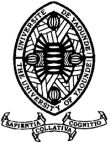Distribution of Bacterial and Fungal Etiologies of Bloodstream Infections in Children Treated for Cancer in Cameroon
Distribution des Etiologies Bactériennes et Fongiques des Infections Sanguines chez les Enfants Traités pour un Cancer au Cameroun
DOI:
https://doi.org/10.5281/hra.v2i10.6082Keywords:
Bloodstream infection, child, cancer, AfricaAbstract
ABSTRACT
Introduction. In Cameroon, the lack of data on local microbial ecology favours the use of empirical antibiotic therapies extrapolated from foreign studies. The aim of this study was to identify bacterial and fungal causes of bloodstream infections and to report their antimicrobial sensitivities in paediatric cancer patients in Cameroon. Methods. We performed a prospective study from January to September 2021 on in paediatric cancer patients at the Chantal Biya Foundation Mother-Child Centre (CME-FBC) in Cameroon. Blood samples were taken from each febrile patient and analysed using standard laboratory procedures for culture, identification and antibiotic susceptibility testing. Results. We observed 61 patients for which 238 blood cultures were drawn. Mean participant age was 6.62 years and the children less than 5 years were the most represented (41%). The blood culture positivity rate was 28.1%, with Gram-negative bacilli being the most commonly isolated organisms (50.9% of isolates). The susceptibility of Gram-negative bacilli to first-line treatment (ceftriaxone and gentamicin) was less than 50%, while susceptibility to 4th-generation cephalosporins, carbapenems and quinolones remained acceptable, with values between 60% and 80%. Antibiotic resistance was present, with 38% of gram-negative bacilli multi-resistant and 100% of methicillin-resistant S. aureus. Conclusion. Gram-negative bacilli are the main aetiological agent of bacteraemia in febrile MCC-CBF cancer patients, with a significant proportion of isolated pathogens showing high levels of antimicrobial resistance. It is important to rely on local epidemiological data for the development of empirical antibiotic therapies.
RESUME
Introduction. Au Cameroun, le manque de données sur l'écologie microbienne locale favorise l'utilisation d'antibiothérapies empiriques extrapolées à partir d'études étrangères. Le but de cette étude était d'identifier les causes bactériennes et fongiques des infections sanguines et de rapporter leurs sensibilités antimicrobiennes chez les patients pédiatriques atteints de cancer au Cameroun. Méthodologie. Nous avons réalisé une étude prospective de janvier à septembre 2021 sur des patients atteints de cancer pédiatrique au Centre Mère-Enfant de la Fondation Chantal Biya (CME-FBC) au Cameroun. Des échantillons de sang ont été prélevés sur chaque patient fébrile et analysés en utilisant des procédures de laboratoire standard pour la culture, l'identification et l'antibiogramme. Résultats. Nous avons observé 61 patients pour lesquels 238 hémocultures ont été prélevées. L'âge moyen des participants était de 6,62 ans et les enfants de moins de 5 ans étaient les plus représentés (41%). Le taux de positivité des hémocultures était de 28,1 %, les bacilles à Gram négatif étant les organismes les plus fréquemment isolés (50,9 % des isolats). La sensibilité des bacilles à Gram négatif au traitement de première intention (ceftriaxone et gentamicine) était inférieure à 50 %, tandis que la sensibilité aux céphalosporines de quatrième génération, aux carbapénèmes et aux quinolones restait acceptable, avec des valeurs comprises entre 60 et 80 %. La résistance aux antibiotiques était présente, avec 38 % de bacilles gram-négatifs multirésistants et 100 % de S. aureus résistants à la méthicilline. Conclusion. Les bacilles à Gram négatif sont le principal agent étiologique des bactériémies chez les patients fébriles atteints de cancer MCC-CBF, avec une proportion significative d'agents pathogènes isolés présentant des niveaux élevés de résistance aux antimicrobiens. Il est important de s'appuyer sur les données épidémiologiques locales pour développer des antibiothérapies empiriques.
References
O’Connor D, Bate J, Wade R, Clack R, Dhir S, Hough R, et al. Infection-related mortality in children with acute lymphoblastic leukemia: An analysis of infectious deaths on UKALL2003. Blood. 5 juin 2014;124.
Caniza MA, Odio CM, Mukkada S, Gonzalez ML, Ceppi F, Chaisavaneeyakorn S, et al. Infectious complications in children with acute lymphoblastic leukemia treated in low-middle-income countries. Expert Rev Hematol. 2015;8:627‑45.
Loeffen E, Knops R, Boerhof J, Feijen L, Merks J, Reedijk A, et al. Treatment-related mortality in children with cancer: Prevalence and risk factors. Eur J Cancer Oxf Engl 1990. 27 sept 2019;121:113‑22.
N T, Pereira N, Banavali S, Narula G, Vora T, Chinnaswamy G, et al. Epidemiology of blood stream infections in pediatric patients at a Tertiary Care Cancer Centre. Indian J Cancer. 1 janv 2015;51:438.
Vidal M, Ferrer A, Serrano S, Tobeña M, Pajares I, Lopez D, et al. Fever in cancer patients as a cause of attendance in emergency room. J Clin Oncol. 20 mai 2009;27(15_suppl):e20706‑e20706.
Toussaint E, Bahel-Ball E, Vekemans M, Georgala A, Al-Hakak L, Paesmans M, et al. Causes of fever in cancer patients (prospective study over 477 episodes). Support Care Cancer Off J Multinatl Assoc Support Care Cancer. 1 août 2006;14:763‑9.
Schwartzberg L. Neutropenia: Etiology and Pathogenesis. Clin Cornerstone. 1 févr 2006;8 Suppl 5:S5-11.
Nkrumah NO, Labi AK, Acquah M, Donkor E. Bloodstream infections in patients with malignancies: Implications for antibiotic treatment in a Ghanaian tertiary setting. BMC Res Notes. 1 déc 2015;8.
Lubwama M, Phipps W, Najjuka C, Kajumbula H, Ddungu H, Kambugu J, et al. Bacteremia in febrile cancer patients in Uganda. BMC Res Notes. 31 juill 2019;12.
K GB, Lokanatha D, Kuntegowdanahalli L, Babu S, Jacob L, Bhat G, et al. Bloodstream infections in febrile neutropenic patients at a tertiary cancer institute in South India: A timeline of clinical and microbial trends through the years. Indian J Med Paediatr Oncol. 1 juill 2016;37:174.
Mvalo T, Eley B, Bamford C, Stanley C, Chagomerana M, Hendricks M, et al. Bloodstream infections in oncology patients at Red Cross War Memorial Children’s Hospital, Cape Town, from 2012 to 2014. Int J Infect Dis. 2018;77:40‑7.
Keighley CL, Pope A, Marriott DJE, Chapman B, Bak N, Daveson K, et al. Risk factors for candidaemia: A prospective multi-centre case-control study. Mycoses. 1 mars 2021;64(3):257‑63.
Edwin Erayil S, Tessier K, Kline S. Risk factors for candidemia: A case–control study. Antimicrob Steward Healthc Epidemiol. 1 juill 2022;2:s56‑7.
Nanayakkara A, Boucher H, Fowler V, Jezek A, Outterson K, Greenberg D. Antibiotic resistance in the patient with cancer: Escalating challenges and paths forward. CA Cancer J Clin. 21 sept 2021;71.
Downloads
Published
How to Cite
Issue
Section
License
Copyright (c) 2024 Angèle Pondy, Jean Taguebue, Rosanne Ngome, Joel Obama, David Chelo, Basilice Minka Obama

This work is licensed under a Creative Commons Attribution-NoDerivatives 4.0 International License.
Authors who publish with this journal agree to the following terms:
- Authors retain copyright and grant the journal right of first publication with the work simultaneously licensed under a Creative Commons Attribution License CC BY-NC-ND 4.0 that allows others to share the work with an acknowledgement of the work's authorship and initial publication in this journal.
- Authors are able to enter into separate, additional contractual arrangements for the non-exclusive distribution of the journal's published version of the work (e.g., post it to an institutional repository or publish it in a book), with an acknowledgement of its initial publication in this journal.
- Authors are permitted and encouraged to post their work online (e.g., in institutional repositories or on their website) prior to and during the submission process, as it can lead to productive exchanges, as well as earlier and greater citation of published work










